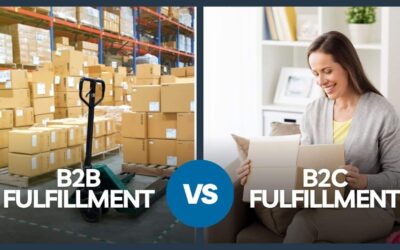
You have created that beautiful hand-crafted item and are now ready to create your listing for this item in your Etsy store. Making sure that your items are priced right will not only pull in sales but also ensure that your store is and remains profitable. Let’s face it, no one ever starts a business to not make money.
There is a lot that goes into setting up a profitable business and in this article, we will explore the dos and don’ts to guide you in setting up a profitable Etsy store.
Jump right in: Mastering Etsy Pricing: Strategies for a Profitable Store
Why is Pricing so Important?
Having and setting a pricing strategy will play a significant role in your business. There is a lot that goes into setting the correct price and how it can either make or break your business. Setting the price to high can cause you to have customers abandoned their cart, setting it low can mean a loss in profits.
If you have a USP (unique selling proposition) you will be able to set yourself apart from your competitors and ensure that you remain in business for years to come. Follow the steps below to ensure that you are a profitable Etsy store.
Step 1: Review Your Costs

Before you set your product’s pricing it is important to know your gross margins.
Gross margin is the difference between the price you sell an item for on Etsy and the direct costs to make that item. It’s expressed as a percentage and shows how much of the sale price is profit before other expenses like Etsy fees or marketing costs.
Formula:
Example: If you sell a handcrafted necklace for $50 and it cost you $20 to make, your gross margin is $30, or 60%. This means 60% of the sale price is profit before considering other costs.
Remember, a good gross margin helps ensure you cover not only the product costs but also other expenses to run your Etsy shop.
This should include any materials, shipping costs, marketing costs, platform costs, custom packaging and labor or fulfillment. All of this plays a key role in the end cost to your customers. If you do not do the initial homework in the beginning, you are setting yourself up for a disaster. This will also allow you to have a smart pricing strategy.
Looking for even more Etsy Tips?
Check out our article about nailing that perfect product description that includes helpful templates made just for Etsy Sellers.
Step 2: Track Expenses

Begin by tracking your expenses. Using a system that will allow you to track these expenses as they occur will help you see where your gross margins are. You could use something as simple as a spreadsheet or use a piece of software such as Quickbooks. This will also allow you to be able to achieve a healthy profit margin and be able to grow your Etsy store. There are several systems available that are user-friendly and offer online help for set-up and troubleshooting but not too expensive for small business use.
Step 3: Research

Now that you know your expenses it’s time to have a little fun and do some research. Look at products that are similar or of the same genre but keep in mind that they may not be of the same quality as your product, or they may not include the shipping costs. All of this should play a role in how you price your product. Taking the time to do the research will help you strategically price your product and hit the customer base that you are gearing for. Try to remember to not worry too much about setting a low price to get sales, often customers look more at how an item was curated or the quality over the price tag.
For example, a cashmere sweater can range from $50.00 up to $200.00 based on the blend of the cashmere and who designed it. Those customers who are paying for that $200.00 sweater know the quality of the product and will continue to purchase from that designer for years to come.
Also, consider using custom packaging for that overall wow experience. Did you know that 72% of Americans state that custom packaging influenced their purchasing decision and 61% state that they were more likely to be a repeat customer?
Step 4: Test the market

It’s okay to dip your toes into the Etsy market. Don’t shy away from experimenting with your prices. If you’re seeing high traffic but few sales, it might hint at a pricing misalignment. On the flip side, a surge in sales could suggest that you’re undervaluing your products.
Remember:
Feedback is Gold: Customer reviews can provide invaluable insights. Pay close attention to any comments on pricing or perceived value.
Iterative Adjustments: It’s rare to nail the perfect price point immediately. Be ready to tweak and adjust based on market response.
Informed Decisions: Couple your experiments with thorough research on similar products and their price points.
The journey to pinpointing that perfect price might be filled with trial and error, but each step is an investment in understanding your market and maximizing your profit potential.
Summary: Etsy Pricing Strategies
When starting out it is key to pay attention to customer reviews of your Etsy store as that plays a role within the Etsy algorithm. Always remember that your costs will fluctuate from time to time, and this will mean that you will need to alter your price to remain not only competitive but profitable. Setting yourself apart from the rest is one of the key points at setting your pricing and being a successful Etsy shop owner.
FAQs: Etsy Pricing Strategies
What is Etsy's pricing strategy?
Etsy doesn't set prices for the items sellers list; instead, each seller determines their own pricing strategy based on costs, competition, and desired profit. However, Etsy does charge fees such as listing fees, transaction fees, and payment processing fees, which sellers should account for when setting their prices.
What should your markup be for Etsy?
The markup for your Etsy products should cover your production costs (materials, labor, etc.), Etsy's fees, and your desired profit margin. A common markup strategy for retail is the Keystone approach, where the resale price is set at twice the wholesale price (or a 50% markup). However, it varies based on the individual seller's circumstances and competitive positioning.
How much of your profit goes to Etsy?
Etsy charges a 5% transaction fee on the sale price, including the shipping price you set. Additionally, there's a 3% + $0.25 payment processing fee for sellers in the U.S. on the total sale amount, including tax. If you're selling from outside the U.S., the fee might differ. Ensure you subtract these fees, along with the $0.20 listing fee, from your total sale to determine your net profit.
How do I set a price on Etsy?
When setting a price on Etsy, consider the following steps:
- Calculate Costs: Understand all your costs, including materials, labor, overhead, and any other expenses involved in creating the item.
- Factor in Etsy Fees: Account for listing, transaction, and payment processing fees.
- Research Competition: Check how similar items are priced on Etsy to understand the market rate.
- Determine Desired Profit: Decide the profit you want to make per item.
- Set Your Price: Combine your costs, desired profit, and a buffer for potential discounts or promotions.
Did you know partnering with a 3PL could grow your Etsy Business?
Get a free quote from eFulfillment Service and see how a 3PL could simplify your Etsy fulfillment!




0 Comments